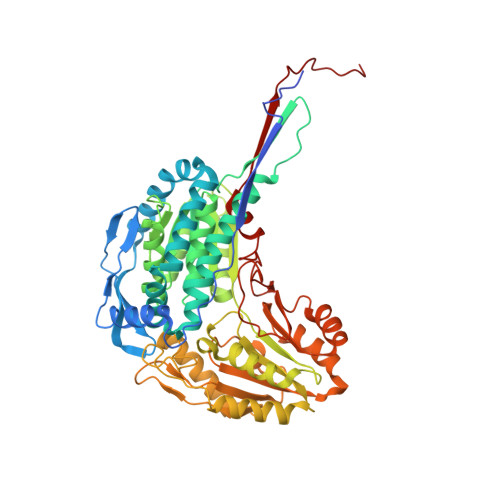How Do Molecular Tweezers Bind to Proteins? Lessons from X-ray Crystallography.
Porfetye, A.T., Stege, P., Rebollido-Rios, R., Hoffmann, D., Schrader, T., Vetter, I.R.(2024) Molecules 29
- PubMed: 38675584
- DOI: https://doi.org/10.3390/molecules29081764
- Primary Citation of Related Structures:
8RKQ, 8RKR - PubMed Abstract:
To understand the biological relevance and mode of action of artificial protein ligands, crystal structures with their protein targets are essential. Here, we describe and investigate all known crystal structures that contain a so-called "molecular tweezer" or one of its derivatives with an attached natural ligand on the respective target protein. The aromatic ring system of these compounds is able to include lysine and arginine side chains, supported by one or two phosphate groups that are attached to the half-moon-shaped molecule. Due to their marked preference for basic amino acids and the fully reversible binding mode, molecular tweezers are able to counteract pathologic protein aggregation and are currently being developed as disease-modifying therapies against neurodegenerative diseases such as Alzheimer's and Parkinson's disease. We analyzed the corresponding crystal structures with 14-3-3 proteins in complex with mono- and diphosphate tweezers. Furthermore, we solved crystal structures of two different tweezer variants in complex with the enzyme Δ 1 -Pyrroline-5-carboxyl-dehydrogenase (P5CDH) and found that the tweezers are bound to a lysine and methionine side chain, respectively. The different binding modes and their implications for affinity and specificity are discussed, as well as the general problems in crystallizing protein complexes with artificial ligands.
- Department of Mechanistic Cell Biology, Max-Planck Institute of Molecular Physiology, Otto-Hahn-Straße 11, 44227 Dortmund, Germany.
Organizational Affiliation:

















